Intel Core 2 Chipset Power Consumption Shootout
by Anand Lal Shimpi on October 12, 2006 12:53 PM EST- Posted in
- CPUs
Gaming Performance & Power Usage with Half Life 2: Episode 1
For some reason the Intel 975X platform fell notably behind the P965 and nForce 570 SLI, which will surely hurt it in the performance per watt comparison.
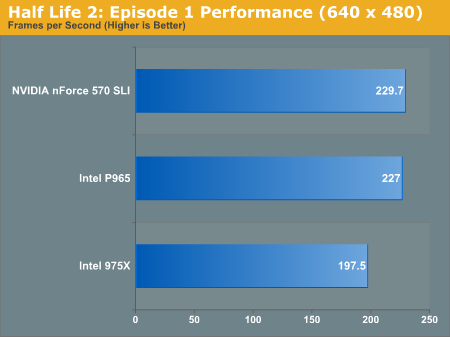
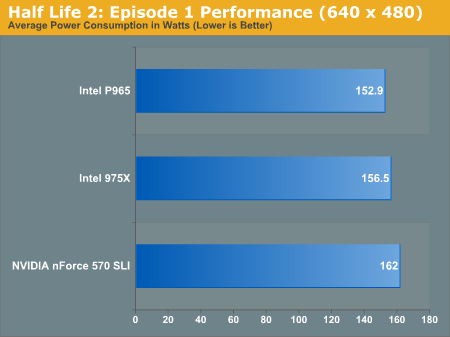
Power consumption is fairly consistant, with the nForce 570 SLI drawing 6% more power than the Intel P965 while offering similar performance. The performance per watt chart below summarizes that fact fairly succinctly:
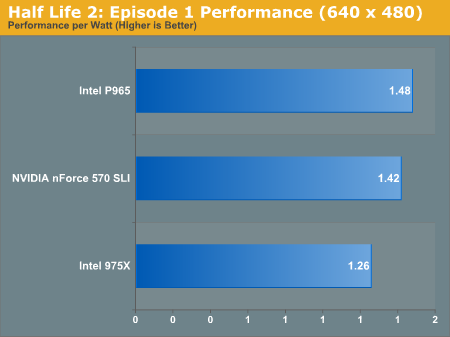
As we crank up the resolution the performance gap narrows, making all three platforms virtually equal.

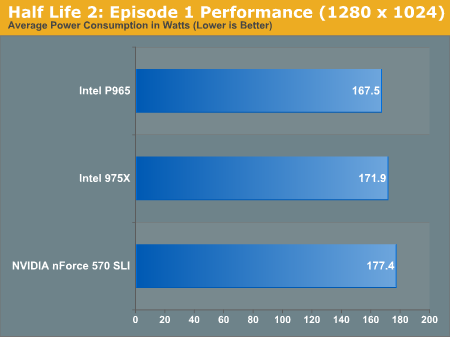
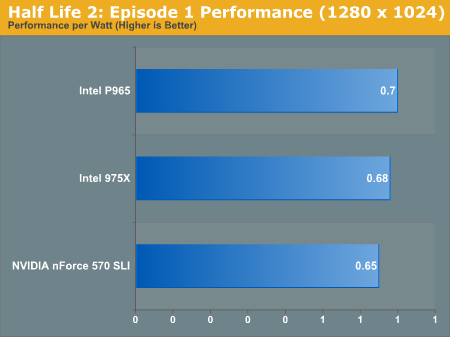
Power consumption actually stayed virtually unchanged with the 570 SLI drawing 5.9% more power than the P965.










44 Comments
View All Comments
jonp - Saturday, October 14, 2006 - link
Whoops. Intuitive logic doesn't always pay off. See the following chart which gives energy costs/BTU for 2006: http://www.npga.org/i4a/pages/index.cfm?pageid=914">DOE Energy Costs . You can see that energy cost from electricity is almost double that of natural gas. You may help heat the building, but it will cost you more. And remember that a lot of electricity comes from coal fired power plants (CO2 producing) and every wire consumes it's own share of energy released as useless heat. Ok probably too much off the chipset topic, sorry.DigitalFreak - Thursday, October 12, 2006 - link
Quick, call Al Gore!Thanks for the good laugh.
Lonyo - Thursday, October 12, 2006 - link
10w is not all that inconsiderable, look at it over multiple components and it becomes significant.10w just for the mobo is, IMO, quite a chunk.
smn198 - Friday, October 13, 2006 - link
Could you measure the power draw of just the chipset by increasing the voltage of the northbridge by 0.2V and then re-running the tests? Take the difference between +0.2V and normal and then you would have isolated the power draw for the chipset and can work out the power draw for the chipset alone.